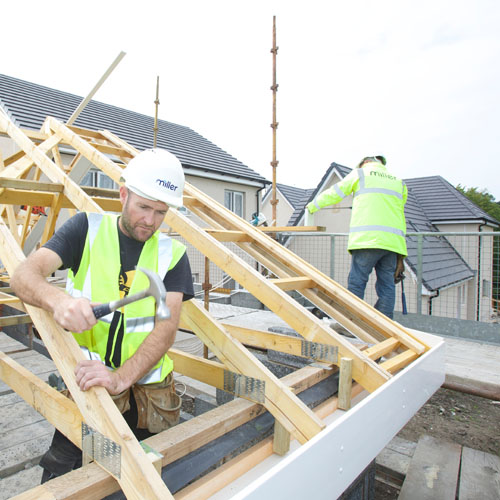Miller Homes strengthens net zero commitment with validated science-based targets

Miller Homes has unveiled new net zero targets which have been validated by the Science Based Targets initiative (SBTi).
The company is the first privately owned homebuilder in the UK to have its targets validated through the globally recognised initiative and has committed to reach net-zero greenhouse gas (GHG) emissions across its value chain by 2045.
Its ambitious near- and long-term targets will reduce absolute scope 1 and 2 emissions and scope 3 emissions per home built. The targets are accompanied by the publishing of the homebuilder’s new environmental sustainability strategy, which acts as the roadmap for how these aims will be met.
From a base year of 2022, the housebuilder commits to reduce its absolute scope 1 and 2 GHG emissions by 50.4% and its scope 3 emissions by 58.2% per square meter by 2032. By 2045, it aims to have reduced scope 1 and 2 by 90% and scope 3 by 97% per square meter.
The SBTi enables private sector companies to set science-based carbon emissions reduction targets and do their part in helping to combat the climate crisis. Miller Homes began the process of target setting and validation in 2023 and its targets are in line with a pathway to keep global warming to 1.5°C, compared to pre-industrial temperatures.
Stewart Lynes, CEO of Miller Homes, said: “We cannot achieve our aim of building better without addressing the climate crisis. Our targets are ambitious but also pragmatic. This is an important step to accelerate our journey to net-zero emissions across our whole value chain, ensuring our customers can live sustainably in healthy communities and our employees can take pride in our approach to responsible homebuilding.
“The bulk of our carbon footprint comes from our scope 3 emissions, so it is essential that our targets and strategy address both our supply chain and the homes we build. Delivering against these targets will be a challenge, but one we are ready and willing to meet.”
Scopes 1 and 2 categorise GHG emissions which are made directly (scope 1) or indirectly (scope 2) through Miller Homes’ operations. Some of the measures the company is taking to reduce these emissions include converting its new car fleet to hybrid and electric vehicles, moving to renewable energy, and shifting its site energy use from diesel generators to solar and hybrid models.
Its scope 3 GHG emissions are generated across Miller Homes’ wider value chain, which includes its supply chain as well as the homes it builds. The company’s plan to build net-zero homes, in line with 2022 building regulations and Future Homes Standard, will make a significant reduction in its scope 3 emissions but is also reliant on the UK electricity grid decarbonisation. It is also addressing reductions through its supply chain and its business travel policy.
Miller Homes’ targets have been future proofed for company growth, and the homebuilder has committed to publicly reporting its full GHG inventory and target process annually.
Its 2024 environmental sustainability strategy is also being published today. It outlines the company’s sustainability journey over the next three years, covering themes of climate change, waste and resources, and nature and biodiversity.




















